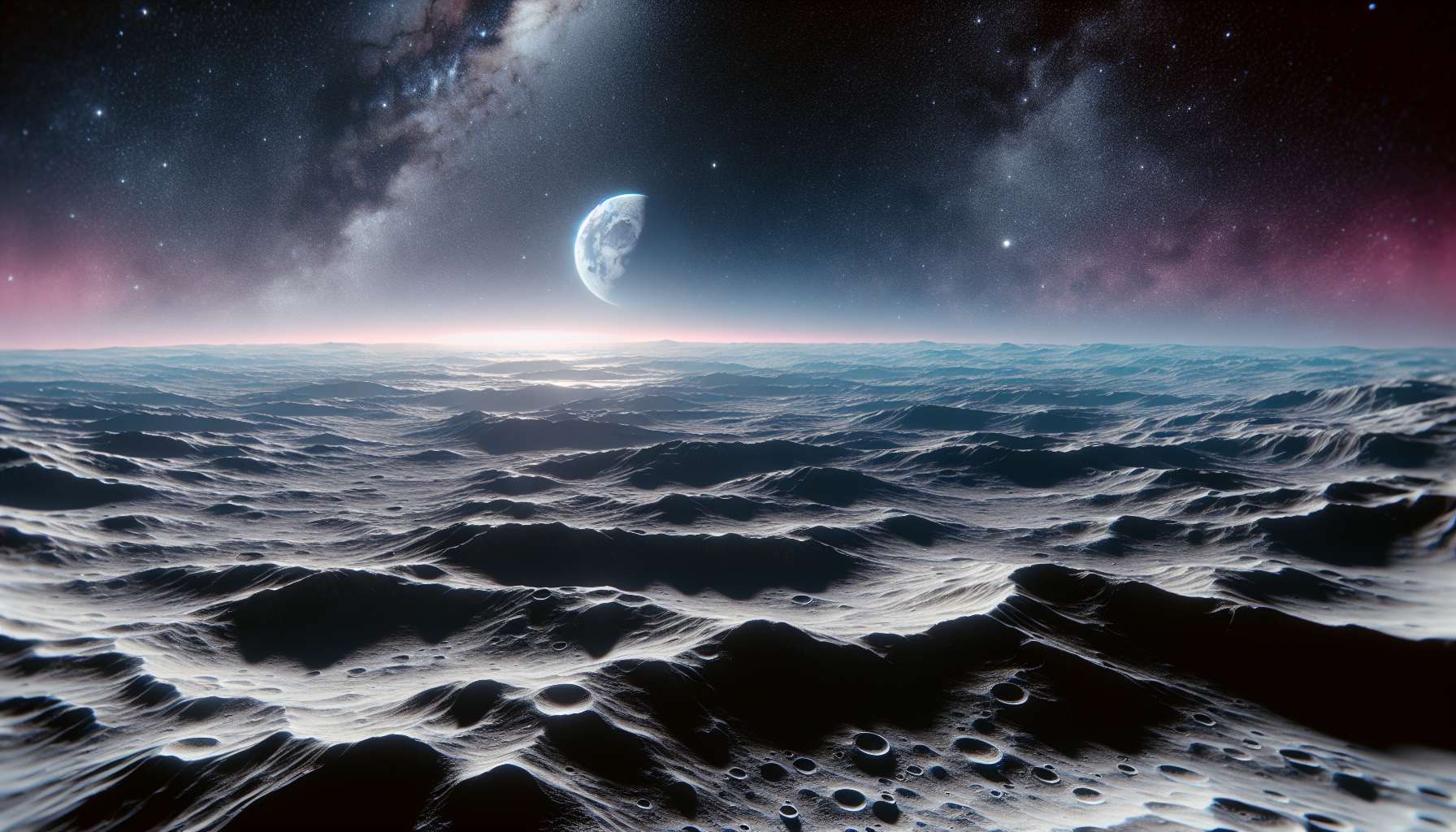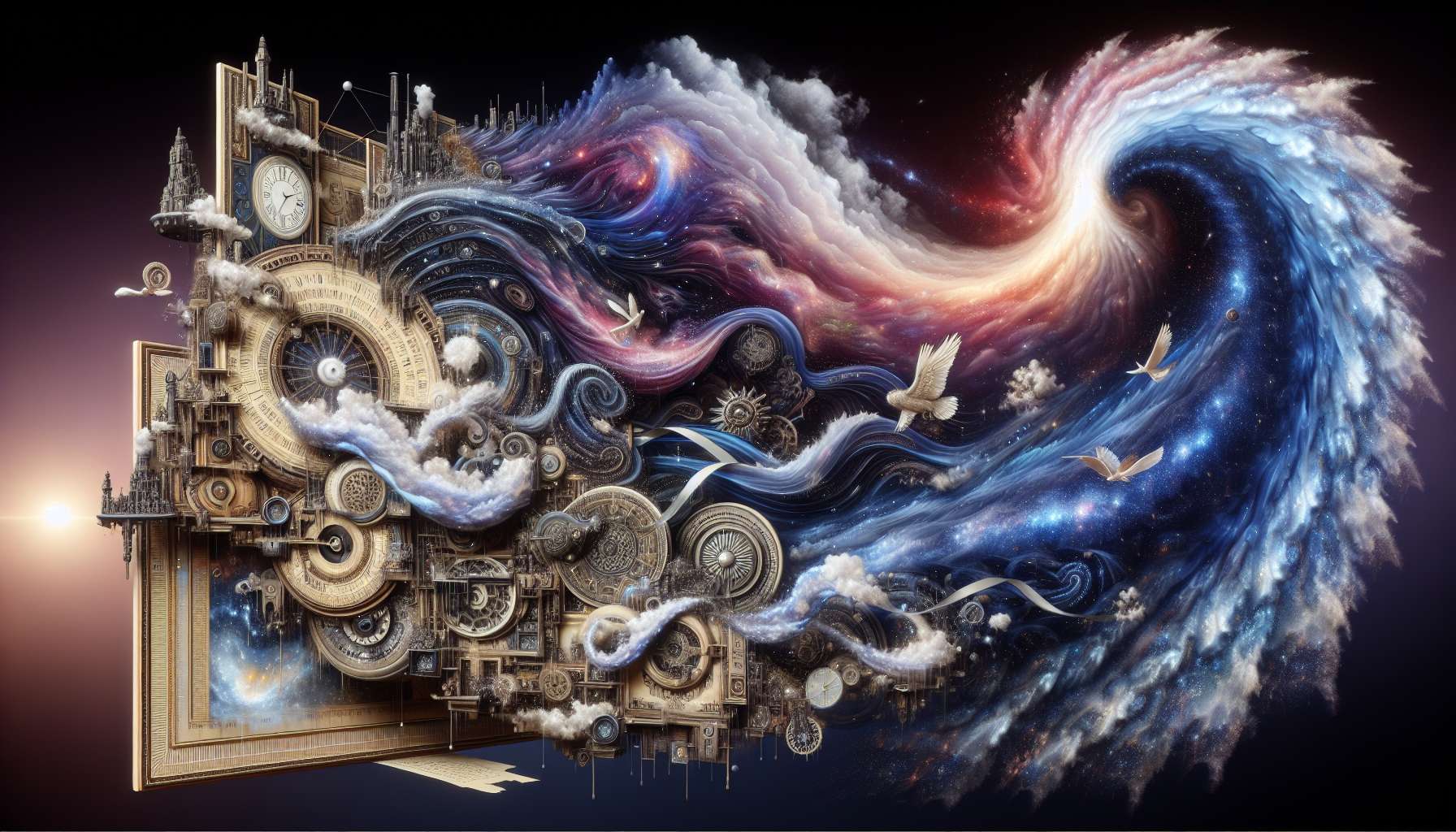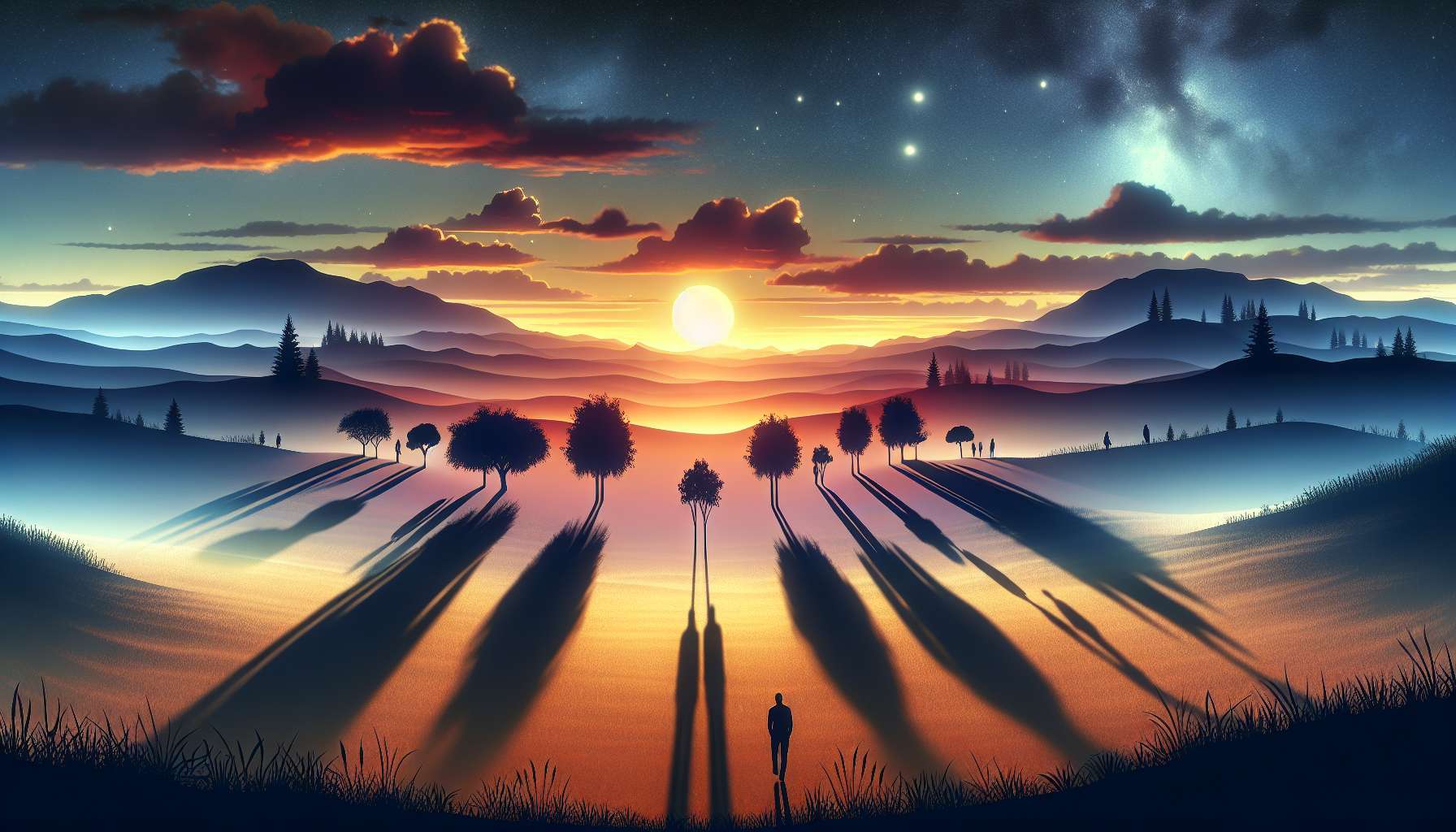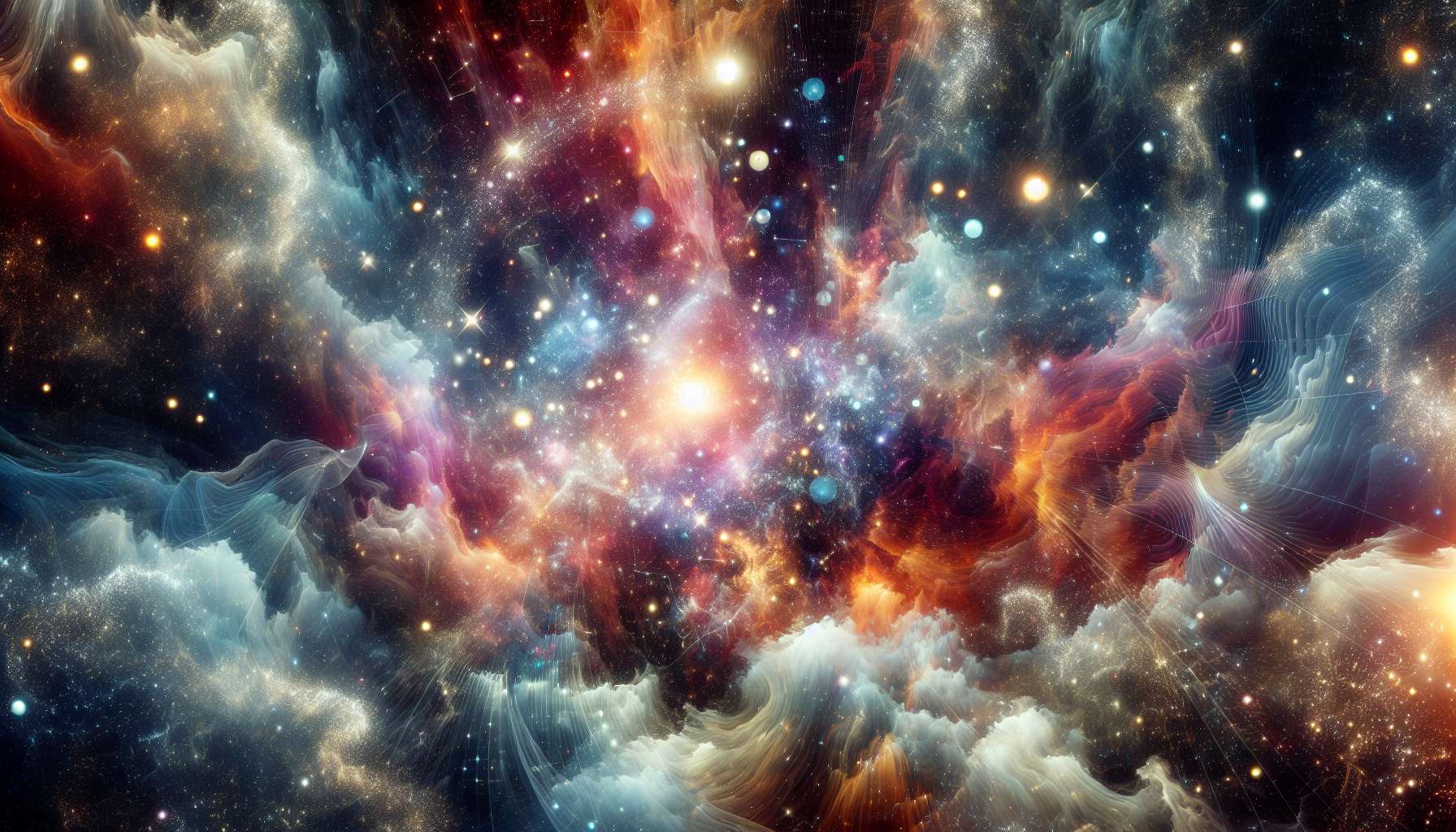Lunar Landscape Impressions: A Detailed Exploration
When we gaze up at the night sky, the moon often captivates us with its serene beauty and mysterious allure. The lunar landscape, with its barren expanse and rugged terrain, has long fascinated scientists, artists, and dreamers alike. In this article, we delve into the intricate world of lunar landscape impressions, exploring the various aspects, implications, and wonders of Earth’s celestial neighbor.
The Fascination of Lunar Landscapes
What is it about the moon that draws us in? The lunar landscape, with its vast plains, towering mountains, and deep craters, offers a stark contrast to the lush and vibrant landscapes of Earth. The desolate beauty of the moon’s surface has inspired countless works of art, literature, and scientific exploration. From ancient myths and legends to modern space missions, the moon has played a central role in human culture and imagination.
One of the most striking features of the lunar landscape is its lack of atmosphere and water. The surface of the moon is exposed to the harsh environment of space, with no protection from meteoroids, radiation, or extreme temperatures. This barren landscape, untouched by wind or water, preserves a record of the moon’s history stretching back billions of years.
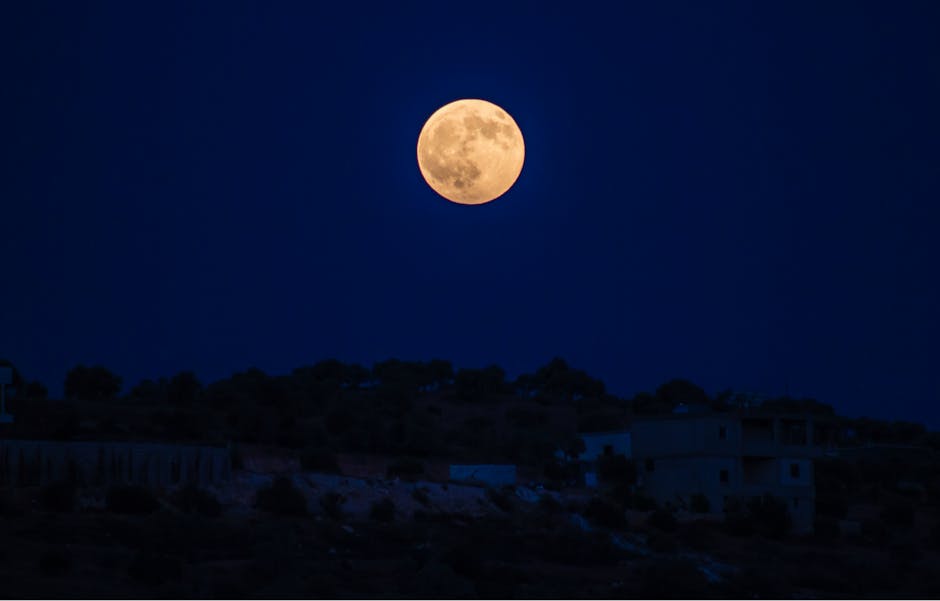
The Impact of Lunar Exploration
Humanity’s fascination with the moon has led to a series of groundbreaking explorations and discoveries. The Apollo missions of the 1960s and 70s marked the first time humans set foot on another celestial body, forever changing our understanding of the universe. The astronauts who walked on the moon described the experience as both awe-inspiring and humbling, surrounded by the vast emptiness of space.
Through the study of lunar rocks and soil samples, scientists have gained invaluable insights into the history and formation of the moon. The moon’s surface is a treasure trove of information, offering clues about the early solar system and the processes that shaped our world. By analyzing the chemical composition of lunar rocks, researchers have been able to piece together a detailed timeline of lunar history.
The Artistic Representation of Lunar Landscapes
For artists and creatives, the lunar landscape has long served as a source of inspiration and wonder. From surrealistic paintings to avant-garde installations, the moon’s desolate beauty has been captured in a myriad of artistic forms. Artists such as Salvador Dali, Georgia O’Keeffe, and Andy Warhol have all drawn inspiration from the moon’s ethereal presence.
Photographers, too, have sought to capture the haunting beauty of the lunar landscape. With advances in technology, high-resolution images of the moon’s surface have become more accessible, allowing artists to explore the intricate details and textures of the lunar terrain. The play of light and shadow on the moon’s surface creates a dramatic and otherworldly effect, inviting viewers to contemplate the mysteries of space.
The Future of Lunar Exploration
As we look towards the future, the moon continues to beckon us with its promise of discovery and adventure. NASA’s Artemis program aims to return humans to the moon by 2024, with the goal of establishing a sustainable lunar presence. This ambitious mission will pave the way for future exploration of Mars and beyond, opening up new horizons for humanity.
In addition to government-led missions, private companies such as SpaceX and Blue Origin are also actively pursuing lunar exploration and colonization. The prospect of mining lunar resources, establishing lunar habitats, and even building a lunar base has captured the imagination of entrepreneurs and visionaries around the world. The moon, once a distant and mysterious world, is now seen as a stepping stone to the stars.
Expert Opinions on Lunar Landscape Impressions
Dr. Sarah Johnson, a planetary geologist at NASA, believes that the lunar landscape holds the key to unlocking the secrets of the early solar system. “Studying the moon’s surface helps us understand the processes that shaped our planet and others in our solar system,” she says. “By analyzing lunar rocks and soil samples, we can gain valuable insights into the history of our cosmic neighborhood.”
Dr. Michael Chang, an artist and photographer, sees the moon as a source of artistic inspiration and creative exploration. “The stark beauty of the lunar landscape is both haunting and mesmerizing,” he says. “As an artist, I am drawn to the textures, colors, and patterns of the moon’s surface, which offer endless possibilities for artistic expression.”
Common Misconceptions about Lunar Landscapes
One common misconception about the moon is that it is a lifeless and barren world, devoid of any geological activity. In reality, the moon is a dynamic and ever-changing world, with volcanic eruptions, tectonic activity, and impact events shaping its surface over billions of years. By studying the moon’s geology, scientists can gain valuable insights into the processes that shaped our own planet.
Another misconception is that the moon has no atmosphere. While the moon’s atmosphere is much thinner than Earth’s, it does have a tenuous layer of gases surrounding it. This exosphere, composed of helium, neon, and trace amounts of other gases, interacts with the solar wind and cosmic rays, creating a dynamic and complex environment around the moon.
Comparative Analysis of Lunar and Earth Landscapes
When we compare the lunar landscape to Earth’s landscapes, we see a stark contrast in terms of geological processes and environmental conditions. While Earth’s landscapes are shaped by erosion, weathering, and plate tectonics, the moon’s landscapes are primarily shaped by impact events and volcanic activity. The lack of water and atmosphere on the moon means that geological processes operate in a fundamentally different way than on Earth.
Despite these differences, there are also similarities between lunar and Earth landscapes. Both worlds have mountains, valleys, and plains, albeit with different origins and characteristics. By studying the similarities and differences between lunar and Earth landscapes, scientists can gain a deeper understanding of planetary geology and the processes that shape our world.
FAQs about Lunar Landscape Impressions
Q: How did the moon’s craters form?
A: The moon’s craters are primarily formed by impact events, where meteoroids and asteroids collide with the lunar surface at high velocities. These impacts create circular depressions, known as craters, that can range in size from a few meters to hundreds of kilometers across.
Q: Is there water on the moon?
A: While the moon’s surface is generally dry, recent discoveries have revealed the presence of water ice in permanently shadowed regions near the lunar poles. This water ice may have important implications for future lunar exploration and colonization efforts.
To Wrap Things Up
As we gaze up at the moon, we are reminded of the vastness and beauty of the universe. The lunar landscape, with its rugged terrain and stark beauty, offers a glimpse into the mysteries of space and time. From ancient myths and legends to modern scientific discoveries, the moon continues to captivate and inspire us with its ethereal presence. As we look towards the future, the moon holds the promise of new adventures and discoveries, inviting us to explore and understand the wonders of our cosmic neighborhood.
Whether through scientific exploration, artistic inspiration, or philosophical contemplation, the lunar landscape leaves a lasting impression on all who gaze upon it. As we continue to unravel the mysteries of the moon, we are reminded of the vastness and complexity of the universe, sparking curiosity and wonder in our hearts and minds.

